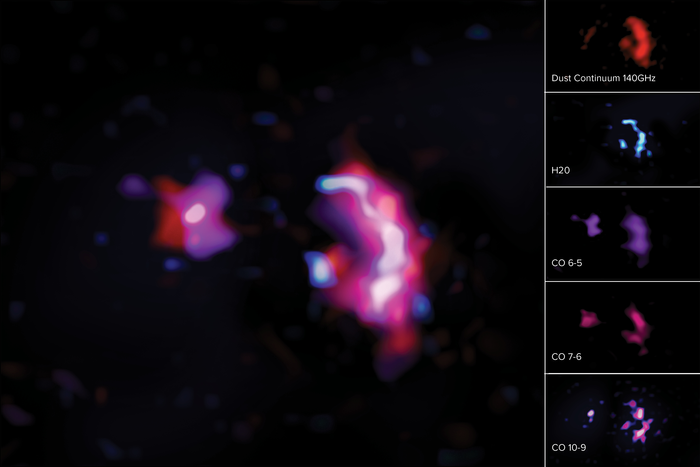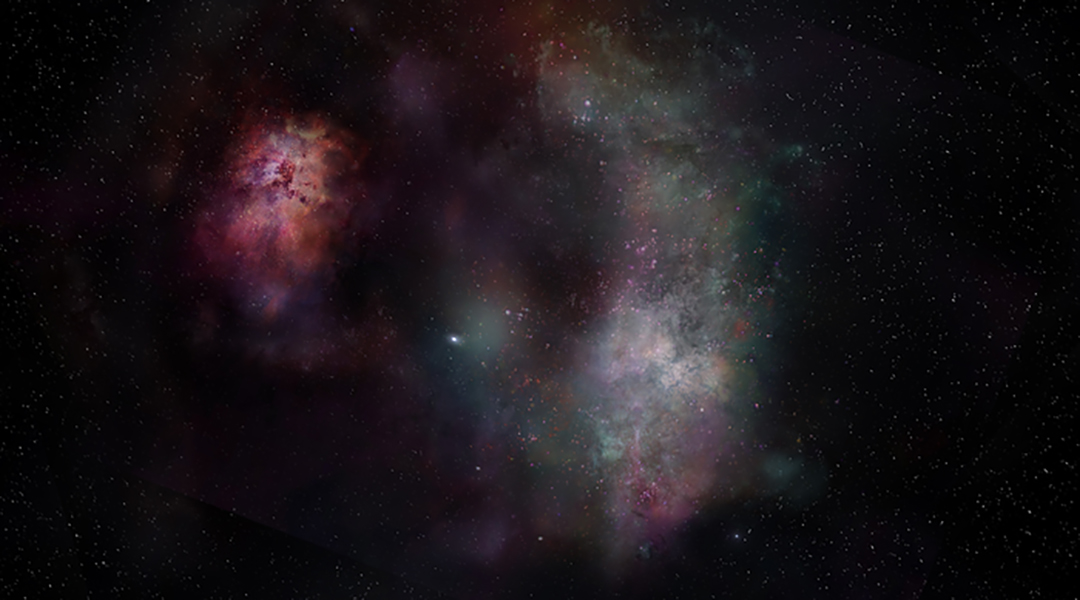Image credit: ALMA (ESO/NAOJ/NRAO)/S. Dagnello (NRAO)
In SPT0311-58, one of the universe’s biggest galaxies located 12.88 billion light years from Earth, astronomers have detected signs of water and carbon monoxide — essential life-forming molecules.
SPT0311-58 was first observed by scientists in 2017 using ESO’s Atacama Large Millimeter/submillimeter Array (ALMA) in Chile, and is actually composed of two merging galaxies. Since SPT0311-58 is so far away, scientists are provided with a window into the universe’s past as the 2017 observations glimpsed the galaxy during the Epoch of Reionization — a time when the universe was only 780 million years old (roughly 5% of its current age) and the first stars and galaxies were being born.
“This galaxy is the most massive galaxy currently known at high redshift, or the time when the universe was still very young,” said Sreevani Jarugula, an astronomer at the University of Illinois and lead investigator on the study publishing the observations. “It has more gas and dust compared to other galaxies in the early universe, which gives us plenty of potential opportunities to observe abundant molecules and to better understand how these life-creating elements impacted [its] development.”
Studying how the first galaxies formed helps scientists to better the evolution of the universe, as well as our own Solar System and Earth. “Studying the gas and dust content of these early galaxies informs us of their properties, such as how many stars are being formed, the rate at which gas is converted into stars, how galaxies interact with each other and with the interstellar medium, and more,” added Jarugula.
Recent observations made by Jarugula’s team using ALMA identified both water and carbon monoxide molecules in the larger of the two galaxies. Water, in particular, is the third most abundant molecule in the universe and previous studies of galaxies in the local and early universe have correlated water emission and the far-infrared emission from dust.

“The dust absorbs the ultraviolet radiation from the stars in the galaxy and re-emits it as far-infrared photons,” said Jarugula. “This further excites the water molecules, giving rise to the water emission that scientists are able to observe. In this case, it helped us to detect water emission in this massive galaxy. This correlation could be used to develop water as a tracer of star formation, which could then be applied to galaxies on a cosmological scale.”
According to Jarugula, there’s plenty left to learn about SPT0311-58. “This study not only provides answers about where, and how far away, water can exist in the universe, but also has given rise to a big question: How has so much gas and dust assembled to form stars and galaxies so early in the universe? The answer requires further study of these and similar star-forming galaxies to get a better understanding of the structural formation and evolution of the early universe.”
Reference: Sreevani Jarugula, et al., Molecular Line Observations in Two Dusty Star-Forming Galaxies at z = 6.9, The Astrophysical Journal (2021). DOI: arXiv:2108.11319

















